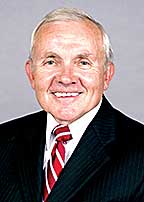Recently I attended an event at Milacron which featured Governor Kasich and I was pleased that both Milacron representatives and the governor cited the machinists apprentice program between Milacron and UC Clermont College as the ideal collaborative model for training manufacturing professionals with job-ready skills.
“Skin in the game” is a term attributed to Warren Buffet who once invested in one of his own companies to indicate his confidence to outside investors. If the company failed, he would lose his personal investment; if the venture was successful, both he and his investors would benefit. Both had “skin in the game.”
This same concept of all parties investing in a collaborative workforce development activity is what makes the Milacron-UC Clermont program work.
Milacron screens qualified prospects and hires them as temporary employees who must enroll in the training program funded by their new employer. If the participants complete the program successfully, they begin work as fulltime employees with benefits.
UC Clermont has invested its instructors, facility and equipment purchased with support from a $250,000 Appalachian Regional Commission grant. The College had to match the grant dollar for dollar to receive the funding and promised to train 100 new manufacturing employees during the next three years as part of the grant.
So, UC Clermont has invested cash, time and energy—their “skin in the game”—in order to meet the guidelines of the grant and to continue this partnership with Milacron. If we fail, we suffer the loss of a partner and penalties for the grant.
The participants must invest 15 weeks of educational training and meet high standards in these classes which include Computer Aided Drawing, Safety, Lean Manufacturing and others to become a benefitted employee with a bright future at Milacron. If they do not complete the program they lose an opportunity and all the benefits which follow.
To date, the “skin in this game” has proven successful with 20 new employees joining Milacron starting last year and another 10 slated to begin training this fall.
What lessons can be learned by this “Skin in the Game” model?
All partners must invest resources, money and energy to gain a return on their investment. ROI means everything to an expanding company such as Milacron. Without a targeted program, they will lose time and money due to employee turnover.
Out of the 20 new trained employees hired by Milacron, 14 continue as productive contributing employees. This compares very favorably with industry norms that may see a success rate of 2 out of 10 retained.
The College meets a percentage of its training quota and carries out its mission as a regional college.
The student employee gains a professional position with opportunity for future growth and education.
Without any “Skin in the Game,” Milacron might see a lower retention rate, the new employees may not have the motivation to complete the program, and the college would not have a fully equipped manufacturing center.
The State of Ohio needs more collaborative partnerships in which all parties invest “some skin” in order to gain long lasting benefits. Otherwise, we will continue to get low return on our investments and we will not meet our ambitious Ohio job growth targets for our activities.
Gregory Sojka is the dean of UC Clermont College.

